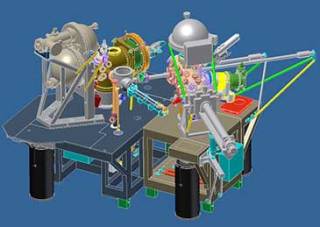Sep 5 2014
A cutting edge system for high resolution imaging and spectroscopy – the first of its kind in the UK – will be installed at the University of Bristol thanks to a grant from the Engineering and Physical Sciences Research Council (EPSRC).

The NanoESCA is an Ultra High Vacuum (UHV) Photo Electron Emission Microscopy (PEEM) system with state-of-the-art resolution for real-space and momentum-space imaging and spectroscopy.
It will enable the electronic properties and chemical composition of thin layers of materials to be revealed and quantified by a non-destructive technique. The instrument is designed for installation on a synchrotron beam line end-station or in a nanoscience laboratory.
The NanoESCA facility will be installed in the University of Bristol's Centre for Nanoscience and Quantum Information in a dedicated ultra-quiet laboratory in 2015. It will give users access to the UK's first nano-PEEM instrument and the ability to perform cutting edge research on materials using ultra-violet, X-ray and tuneable light sources.
This unique facility will be used by postgraduate and academic researchers drawn from across the University as well as from other universities in the southwest region. Some of the research activities have regional partners (the Bristol-Oxford Nuclear Institute), while others will support Bristol's national collaborations including Power Electronics and the National Composites Centre.
The NanoESCA facility will also allow Bristol to establish a new strategic partnership with the Diamond Light Source to facilitate access for new and existing synchrotron users, while helping to expand the community of UK researchers working on advanced materials for renewable and nuclear energy, composites, and bio-nano applications.
Leader of the NanoESCA Project, Dr Neil Fox, said: "We are delighted to have received this grant from the EPSRC. It allows us to establish a national resource that will enable the pace of cutting edge material science and discovery to be accelerated using a unique analytical instrument in one of world’s quietest (ultra-low vibration) laboratories."